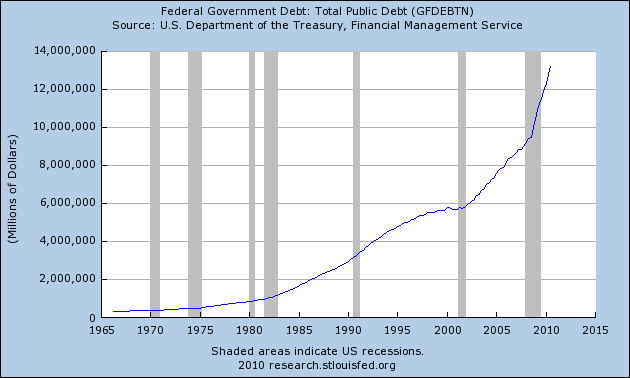Nikolai Kondratieff was a Russian economist who predicted that the economy moves through
40-60 year waves. Looking back at history we can see these waves. They go back much further but this is enough for my purposes.
1. Railroad wave, from 1843 to 1897. (54 years). This was a boom caused by the growth of railroads and collapsing with their overbuilding.
a. beginning (spring), 1843 when the
Panic of 1837 was over.
b. peak (summer), post-Civil War boom starting in 1864, peaking in 1873
c. start of decline (autumn),
Panic of 1873, continuing into the
Long Depression
d. trough (winter),
Panic of 1893.
2. Electricity wave, from 1897 to 1938 (41 years). Growth during this period was caused by electrification of factories and by other technologies such as the telephone, motion pictures, automobile, skyscrapers, airplanes and the Panama Canal. The Great Depression was caused in part by overinvestment, underconsumption, and the breakdown of international trade.
a. beginning (spring), 1897, when the Panic of 1893 was over
b. peak (summer), 1920, the start of the
Roaring 20's
c. start of decline (autumn), 1929 with the
stock market crash on Black Tuesday, continuing into the
Great Depression, which technically ended in 1933.
d. trough (winter),
Recession of 1937 which ended in 1938.
3. War and Post-War, Automobile and Oil wave, from 1938-1982 (44 years). This era was characterized by the great growth in automobiles, road construction, oil exploration, and suburbanization and came to a crash with the quadrupling of oil prices and stagflation.
a. beginning (spring). In 1938, the economy began to recover, and WW2 brought full employment.
b. peak (summer), in 1958, the stock market gained 33%. The peak year was 1972 when the Dow reached 1000.
c. start of decline (autumn),
1973 oil crisis, leading to stagflation.
d. trough (winter), 1980 recession, followed closely by the
1981 recession.
4. Internet wave, from 1983 to present. This started with the optimism caused by the election of Reagan, and continued with the World Wide Web, which started about 1991.
a. beginning (spring). The early 1980's recession ended in November 1982. During this period,
Black Monday occurred when the stock market dropped by 22% for no apparent reason.
b. peak (summer). The stock market began a rapid ascent in about 1990, growing from 2,800 on 1/2/90 to 11,700 on 1/14/2000. The dot-com bubble collapsed in 2000. The attacks on
9/11/2001 caused a mini-recession, but a housing bubble developed which peaked in 2006.
c. start of decline (autumn). On about
Sept. 18, 2008, there was a near systemic collapse as investors started withdrawing funds from money markets in a panic, saved only by quick action by the Federal Reserve, so this is the best date for the start of the decline. The recession technically began earlier, in Dec. 2007.
d. trough (winter). This is just a wild guess, but based on prior trends there will probably be a recovery at some point about 2015 or so, followed by a final recession about 2020, with recovery starting about 2023, when the next cycle will begin. (Note that this is a prediction of an economic cycle, which is completely independent of the financial crisis caused by too much debt).

